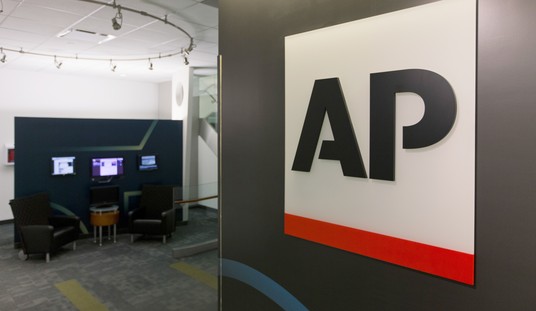News that 14 members of the U.S. Army’s 12th Combat Aviation Brigade received the German Gold Cross Medal threw a spotlight on coalition operations in Afghanistan. The German term for the award granted is the Ehrenkreuz der Bundeswehr in Gold, which a Bundeswehr site describes as [machine translation by Google] as “distinguished by a red outline of the cross … which will be awarded for faithful performance of duty and extraordinary performance … or ‘risking life and limb’ (gold-colored version).”
The events revolved around an ambush by a large Taliban force on a German road clearing operation on April 2, 2010. “The fighting that followed lasted around 10 hours … NATO air support was called in but was unable to attack for fear of striking German soldiers or civilians.” It was one of the bloodiest days in combat for the German Army since the end of World War 2. But it wasn’t over. A responding German unit killed six Afghan Army soldiers in a blue on blue incident. A Bundeswehr account of the engagement [machine translation] is as follows.
One of our companies stationed in Kunduz, the first Infantry company, has held up on Friday during a routine operation in the district of Chahar Darreh. … It was with this company to an infantry company of 373 paratroopers battalion from Seedorf in Lower Saxony. The company had the task of a so-called IED sweep …
Against Afghan clock time was 13.04 by this company about 30-40 Taliban with small arms and RPG, these are RPGs, attacked from an ambush out. During this first firefight, three German soldiers were wounded. Two seriously.
The company commander of the infantry company had immediately after the start of the fire fight gain from the PRT and requested the commander of Kunduz PRT Kunduz was stayed by an immediate operational reserves of the PRT in March. It was also the site where the battle took place, monitored by drones – KZO and LUNA -.
On several occasions force was “Show of Force,” the use of weapons by the aircraft it was not, as a threat to its own forces could not be excluded and teeth of the Taliban with the civilian population was one. For the recovery of the wounded soldiers were Kunduz U.S. MEDEVAC helicopters from the PRT used. The helicopters were quickly on site, the recovery of wounded designed, however, difficult because the Taliban have also attacked the helicopter again and again.
I would also like to take this opportunity to thank our American friends who have risked their lives flying our wounded to the hospital in Kunduz. While the first company of the Taliban broke and shunned, fell at 14.50 clock is a German Dingo in a booby trap. At this stop, the vehicle was heavily damaged and wounded four other German soldiers. The dingo could not be recovered, and was later destroyed by own forces.
The fighting between the Taliban and the first Company still held up at about 17:00 clock. In four other soldiers were wounded.
Although it was big news in Germany, the incident was largely ignored in the US media and unknown except to those whose lives were immediately affected. An Army wife married to one of the responding US helicopter crewmen recalls how she tried to find out all she could about the event, sensing that her husband was probably involved. “I was in Scotland for Easter when I heard the devastating news that on Good Friday (April 2) three German soldiers were killed and five wounded”.
After spending hours searching the Internet to learn more about the incident, I discovered that three UH-60 Black Hawks had been directly involved in the medical evacuation flights. I instantly realized that there was a high probability that my husband had flown one of them.
He and a small crew had been sent to Kunduz in March to support their sister company C/5-158 Avn. Regt, 12th CAB, a MEDEVAC unit, by providing cover on their missions with a UH-60 Black Hawk gunship.
Although marked with Red Crosses and Red Crescents, the medical evacuation helicopters are often fired upon and they are normally accompanied by an armed helicopter to suppress groundfire if need be. The required pairing of a gunship with a the evacuation helicopter recently became a major news story in Australia after the lack of an Apache escort forced a delay in the evacuation of an SAS soldier who subsequently died. The extremely challenging nature of the task was highlighted by an Australian defense minister’s reply in 2008 that Australia could not supply its own simply because it did not have hardware to the standard needed to carry out the job.
“One, we are already overstretched. Second, our helicopters would have to be upgraded to deal with the modern-day threats which exist in a theatre like Afghanistan,” he said.
Mr Fitzgibbon said some were being modified but would not be ready until next April.
“So even if we wanted to send helicopters to Afghanistan, we’re not in a position to do so, at least not on the basis of ensuring the safety of those who fly them and those who would be recovered by them,” he said. “We’re stuck with using the Americans’ and the International Security Assistance Force partners.”
During the evacuation under fire of German casualties in Kunduz, the UH-60s were visibly taking fire. German Paratrooper Master Sgt. Patrick Bonneik the Bundeswehr attack controller said “you could see the sparks coming off the helo [from small arms fire]”. Just like in the movies, except that it wasn’t.
[youtube YGGSSLebX6U&hl=en_US&fs=1&]
Video of the Awards
[youtube rWaehyJb0pg&hl=en_US&fs=1&]
The Pedros, as described by Michael Yon. Different service, similar work.










Join the conversation as a VIP Member